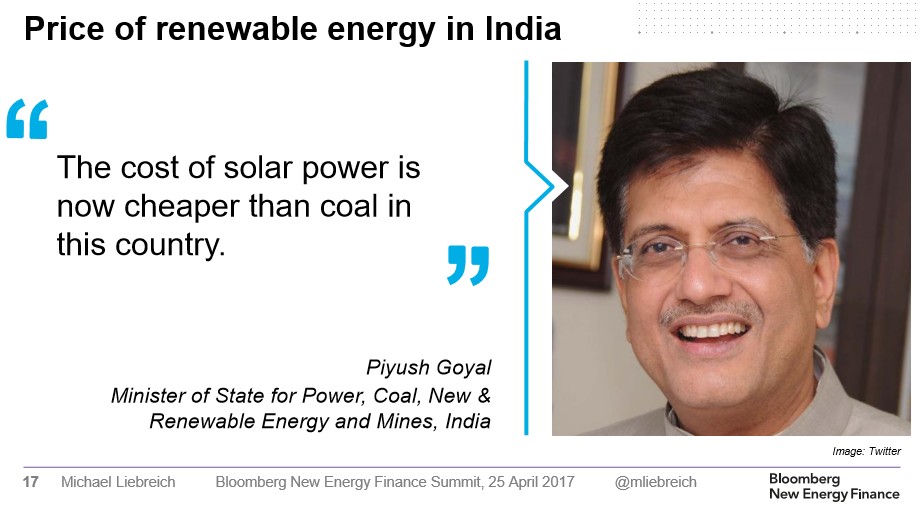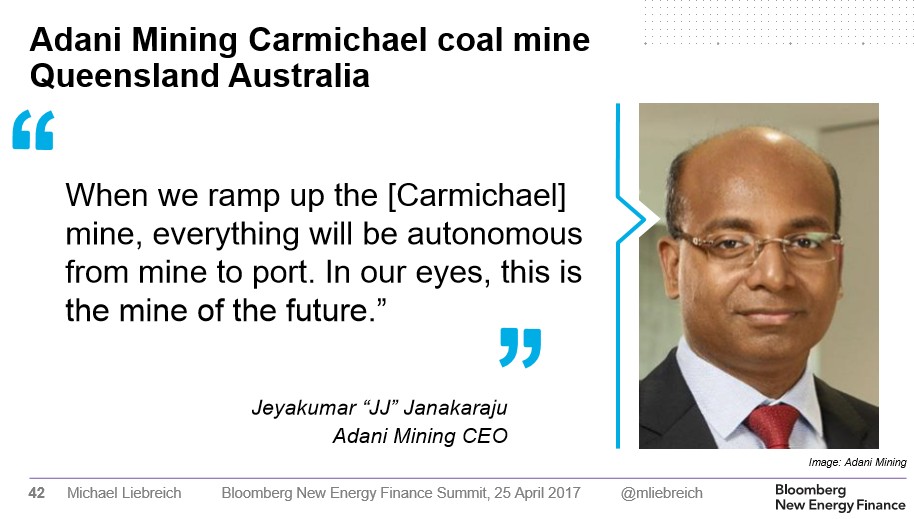The justification behind the proposed $1 billion concessional loan from Australian taxpayers to Adani to build the Carmichael coal project has taken another hit today with reports that India’s appetite for coal is waning. From The Australian:
In the last two years, coal consumption has slowed to its lowest level in two decades, even with the economy growing at a steamy 7 per cent annual pace.
Thermal power plants have been running below full capacity for years and as of June were operating at only 57 per cent of total capacity, the lowest level ever…
“India’s future coal demand could actually be near flat,” said Tim Buckley, the Asia energy finance director for the Cleveland-based Institute for Energy Economics and Financial Analysis. “The technology-driven changes are happening faster than predicted.”
The developments come as Adani pushes ahead with its massive $16.5 billion Carmichael coal mine in Queensland, from where it plans to ship 60 million tonnes of coal a year to India.
A similar correction is under way in China, where officials and analysts have had to walk back earlier predictions that its annual coal needs would peak in 2030. Instead, the International Energy Agency says China’s coal use — and emissions — topped out in 2013.
The rate of increase in coal consumption in India is now the slowest it’s been since 2000, apart from an anomalous 1 per cent rate of growth in 2011. Last year, it dropped to 1.5 per cent from the decade’s average of 6 per cent. This year, it’s slightly higher at 2.8 per cent…
India’s coal mining giant Coal India is already worried. Last month, it hired KPMG to draft a road map for its future growth beyond 2030. The Indian coal sector is at a “crossroads today,” the tender document says…
In those 10 years, improved battery technology that would enable weather- and time-dependent solar and wind power to serve as around-the-clock power sources could help reduce coal use further, according to Mathur, of The Energy and Research Institute.
Battery prices have already fallen by two-thirds, he said. If they drop by another 50 per cent in the next decade, solar power with battery storage will be cheaper than coal-fired power.
“I’ve got my fingers, my toes, everything is crossed” for that to happen, Mathur said. “I believe that it will.”
None of this should come as a shock. India’s Minister for State Power has already acknowledged that the cost of solar power is now cheaper than coal:

Blind Freddy can see that the Adani Carmichael Project risks becoming an unviable stranded asset, and Australian taxpayers risk losing their dough by lending $1 billion for the project.
Worse, the subsidised project would flood the world with more cheap coal, thus depressing its price, increasing global consumption (and exacerbating climate change), as well as putting non-subsidised mines in NSW and QLD out of business, resulting in job losses.
It’s not as if the employment payoffs from the Carmichael project are material, either. Adani’s CEO has continuously boasted that the Carmichael Project will be the most autonomous in the world:

Whereas Adani’s own hand-picked economic expert, Jerome Fahrer from ACIL Allen consulting, told the Queensland Land Court that only 1,464 full-time equivalent jobs would be created by the project. These piss weak job gains must also be offset by the job losses that would occur among other Queensland and New South Wales coal mines.
In short, there are far better ways to use scarce taxpayer funds than on this wasteful white elephant. Australia must withdraw its concessional loan pronto and tell Adani that if it wants the Carmichael mine, then it must fund it entirely itself and bear the risk, as well as pay the correct amount of royalties to the Queensland Government.

